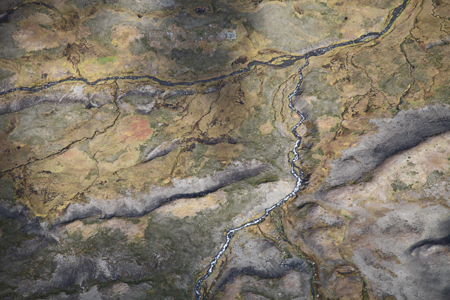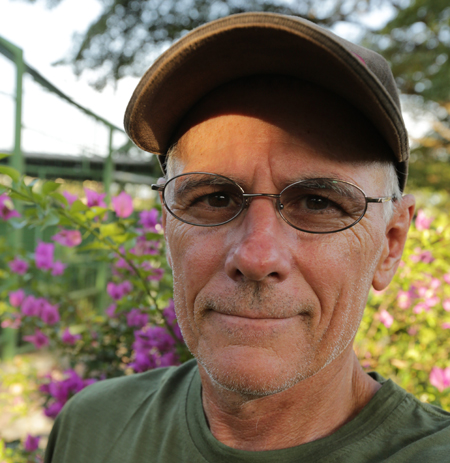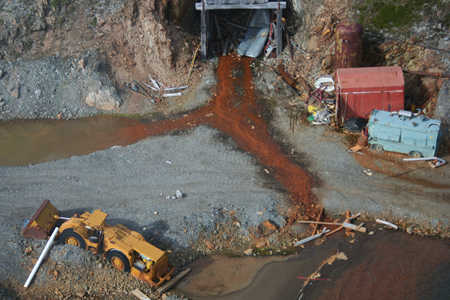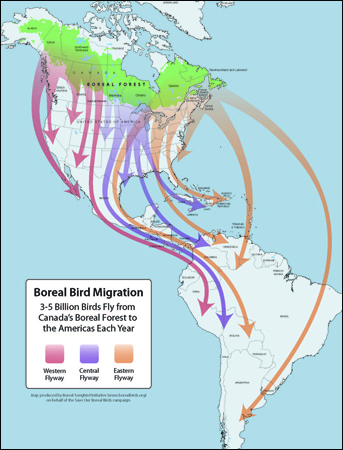
Aerial view of rivers converging in NW British Columbia.
Credit: Michael Fay
We here at the Boreal Songbird Initiative (BSI) are proud to host internationally renowned conservationist J. Michael Fay on a speaking tour about a new ‘gold rush’ of mining development in the otherwise-remote northwestern corner of B.C. and the impacts it could have on coastal salmon and wildlife.
West Coast Environmental Law will be hosting the Vancouver leg of his speaking tour on Monday, April 15th and we (BSI) will be hosting the Seattle discussion on Thursday, March 18th. You can find the specifics about the tour and venue information here:
-Background-
Michael Fay has spent much of his professional career in and out of Africa. A six-year stint in the Peace Corps as a botanist in Tunisia and the Central African Republic led him to this wild yet increasingly-developed continent. Upon joining the Missouri Botanical Garden he returned to Africa, and it was on this trip that he became inspired to complete his Ph.D. on western lowland gorillas.
He has since gone on to become one of the world’s most well-known conservationists and has played a prominent role in numerous high-profile events, including walking the more than 2000-mile corridor of intact forest blocks between Congo and Gabon, hosting then-Secretary of State Colin Powell on a rainforest tour in Gabon to commence a new multimillion dollar conservation program and completing the Megaflyover, an eight month aerial survey of Africa which catalogued more than 116,000 images – some of which are visible on Google Earth.

Michael Fay
Credit: Michael Fay
While Africa may be his primary home and focus, he now finds himself amidst—perhaps unintentionally at first—one of the ecologically critical yet under-recognized conservation issues in North America.
When Michael purchased a small cabin on the Unuk River just north of Ketchikan, Alaska, he thought he would be able to find solace away from the very development he’d spent the better part of his life studying. Instead, he found himself downstream of one of the newest and most rapidly-developing mineral exploration regions in North America. A number of large-scale mines were being planned and proposed throughout northwestern British Columbia, directly upstream of some of Southeast Alaska’s most important salmon-bearing rivers.
He was equally surprised to find out that not only were these large projects moving forward, but that there was little to no long-term planning at a regional scale to ensure development be carried out sustainably and in the interest of the nearby affected communities. Areas were being staked with the click of a mouse, nearby communities—particularly Aboriginal communities—were not being properly consulted, and the rights to the minerals below the ground often trumped either private property or traditional rights on the land above.

Contamination leakage at the Old Brucejack Mine in British Columbia.
Credit: Michael Fay
Michael is concerned about both the pace and scale of mining expansion in this scenic and otherwise pristine region. He fears the repercussions of this new ‘gold rush’ could impact not just local communities and wildlife in B.C., but downstream communities on either side of the border – many of which are already dealing with depleted fisheries and struggling to balance vibrant economies with sustainable harvest levels. He will share his stories, as well as some amazing photographs and video, from his experiences in the region.
Find out more about the tour on the main tour website >
-Why BSI?-
A question one might ask is: why is an international bird organization hosting an event about transboundary mining and salmon issues?
The answer is perhaps more simple than it is complex. We are concerned about the global impacts of development in Canada’s boreal forest, whether in relation to birds, climate change, transboundary rivers, wildlife or others.
The three to five billion migratory birds that breed in the boreal each summer are just one of many global, ecological 'exports' the boreal forest produces (click to enlarge)
Map credit: Boreal Songbird Initiative
The phrase “what happens in Vegas stays in Vegas” may be fitting for that particular nightlife-driven city, but that notion could not be more opposite when discussing Canada’s boreal forest. The billions of birds that breed in the boreal migrate south throughout the United States and as far south as the Tierra del Fuego. The emissions released from developing the carbon-rich boreal forest pose a threat to the entire planet. The thousands of still-pristine rivers that originate in the boreal drain into oceans and seas we all share. The mines that are opened, extracted and left—often for decades—in various states of disrepair have real consequences for the wildlife and communities downstream.
As such, we are deeply concerned that unchecked mining development in northwestern British Columbia could leave an irreversible footprint on local and migratory wildlife, from salmon and migratory fish to the bears and the birds on either side of the border.
So we hope those of you near the Seattle or Vancouver areas will join us in learning more!


